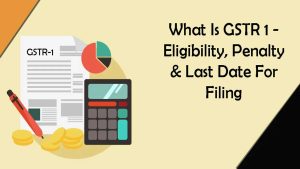Goods and Services Tax (GST) is the tax imposed when a customer purchases a good or a service. The GST is meant to replace all indirect levies on goods and services by the central and state governments of India.
3 Types of GST
There are 3 types of GST in India – CGST, SGST, and IGST.
What is SGST
SGST is imposed on interstate goods and service transactions by the state government. The revenue received through State Goods and Service Tax is collected by the state government where the transaction is made. SGST combines earlier taxes such as VAT, entertainment tax, luxury tax, octroi, lottery tax and buy tax.
SGST shall be replaced by the UGST or the Union Territory Goods and Service Tax if there is a union territory such as the Andaman and Nicobar Islands or Chandigarh.
What is CGST
CGST is imposed on intra-state goods and service transactions by the Central Government. The central government receives revenue from Central Goods and Tax on Services. This is levied in conjunction with SGST or UGST and revenue is shared between state and middle.
For eg, if you’re a Bhopal based dealer and sell to another Bhopal dealer because it’s an intra-state sale, both CGST and SGST would apply to this transaction.
If the products transaction is worth Rs.30,000 and it attracts 18 per cent GST, then the state government collects 9 per cent, which is Rs.2,700 of the tax amount, as SGST and the centre collects a similar sum as CGST.
What is IGST
Integrated Goods and Service Tax is the tax levied on goods and service transactions between states. It also focuses on imports and exports. Within IGST both the center and the state share the taxes paid. The SGST part of the tax goes to the state that buys the goods and services in.
IGST also lets you claim a tax credit for inputs. It’s a facility that regulates cascading tax and lets company owners like you save at all levels of the supply chain.



